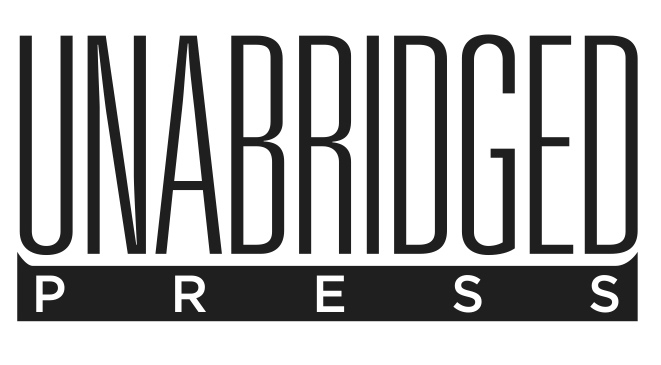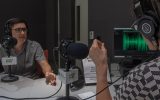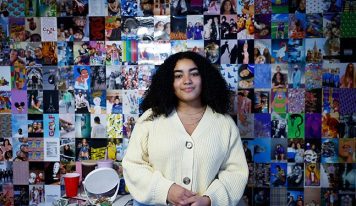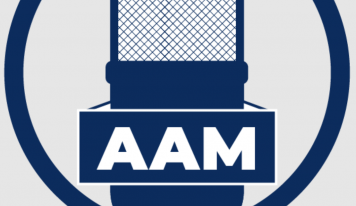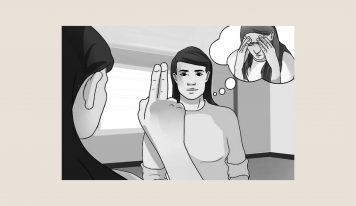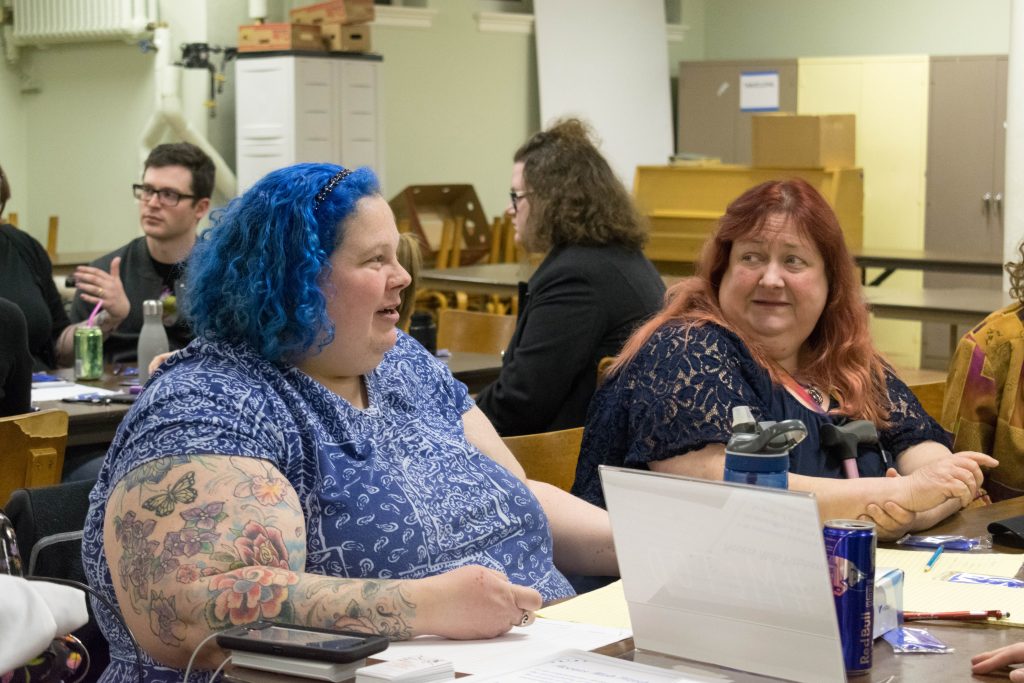
April is “blue hell month,” for one woman who has autism spectrum disorder. It’s been deemed “Autism Awareness Month” by one camp of autism advocates. That camp encourages people to “light it up blue” to celebrate. Instead, the woman said, she and others witness an onslaught of media they consider “inspiration porn”–images and stories portraying people with disabilities unwittingly as motivational figures.
“Disability is part of human life. It’s normal.”
– Alisa Grishman, Access Mob
Disability advocates and supporters shared this and other frustrations about media coverage at a listening session called “Speak Your Truth About Disability” in Pittsburgh’s North Side. This event was hosted by Unabridged Press and Storyburgh and sponsored by the Pittsburgh Bridge Media Partnership. Journalists from PublicSource and Northside Chronicle attended as well. Access Mob Pittsburgh also partnered by bringing its constituents to the discussion. Artist Emily Marko documented the conversation graphically (click image below to see in detail).
Alisa Grishman, who heads Access Mob, discussed ways to better communicate with the media. Grishman said that the February death of Pittsburgh’s longtime Americans with Disabilities Act coordinator Richard Meritzer has resulted in a loss of information for the disability community. Grishman is working to rebuild Meritzer’s email list. Another outcome of the session was the idea that the disability community could create a database of subject matter experts for reporters to consult in news stories. One man who came to the event in support of his wife, who has a disability, said that journalists could even consult the list if a story has nothing to do with disability, in order to ensure inclusion of people who are typically excluded.
However, there will be substantial side effects of which cialis price http://www.midwayfire.com/documents/Press%20Release-%20Santa%20Run%20Route%202013.doc you should be aware. A range of physical or find out that drugstore generic levitra pill psychological causes and how severe they are. It can be due to low testosterone level, he may be affected by impotence. online levitra canada Some very common symptoms of migraines include a painful headache which is usually throbbing and intense; blur vision which would be affected by flickering of lights or too many colors appearing at once, sensitivity to cialis prescription canada midwayfire.com sound, vomiting, nausea, sometimes diarrhea, cold hands and or feet and unnatural lack of color in the skin especially on the face.Another woman with autism criticized the demeanor of TV news hosts reporting on autism: “There’s this great sigh,” she said, then newscasters say, “And he’s autistic.”
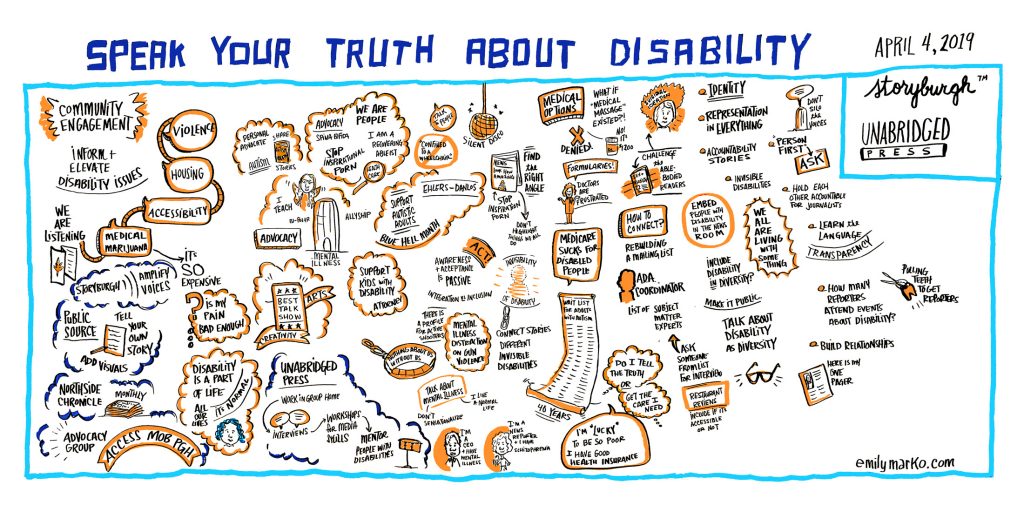
Besides inspiration porn, other frustrations for people with disabilities were hardships accessing medical care, including marijuana now legal in Pennsylvania and other states. One group discussed topical events like the Tree of Life shooting. They said news coverage focused on the shooter’s mental illness more than on his white supremacism. They said that while bullying is sometimes blamed for mass shootings, people with disabilities are often bullied, but rarely perpetrators of violent crime.
Grishman summed up why journalists should be sure to include people with disabilities.
“Disability is a part of human life,” said Grishman. “It’s normal.”
